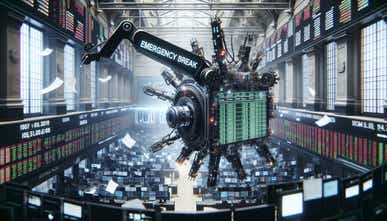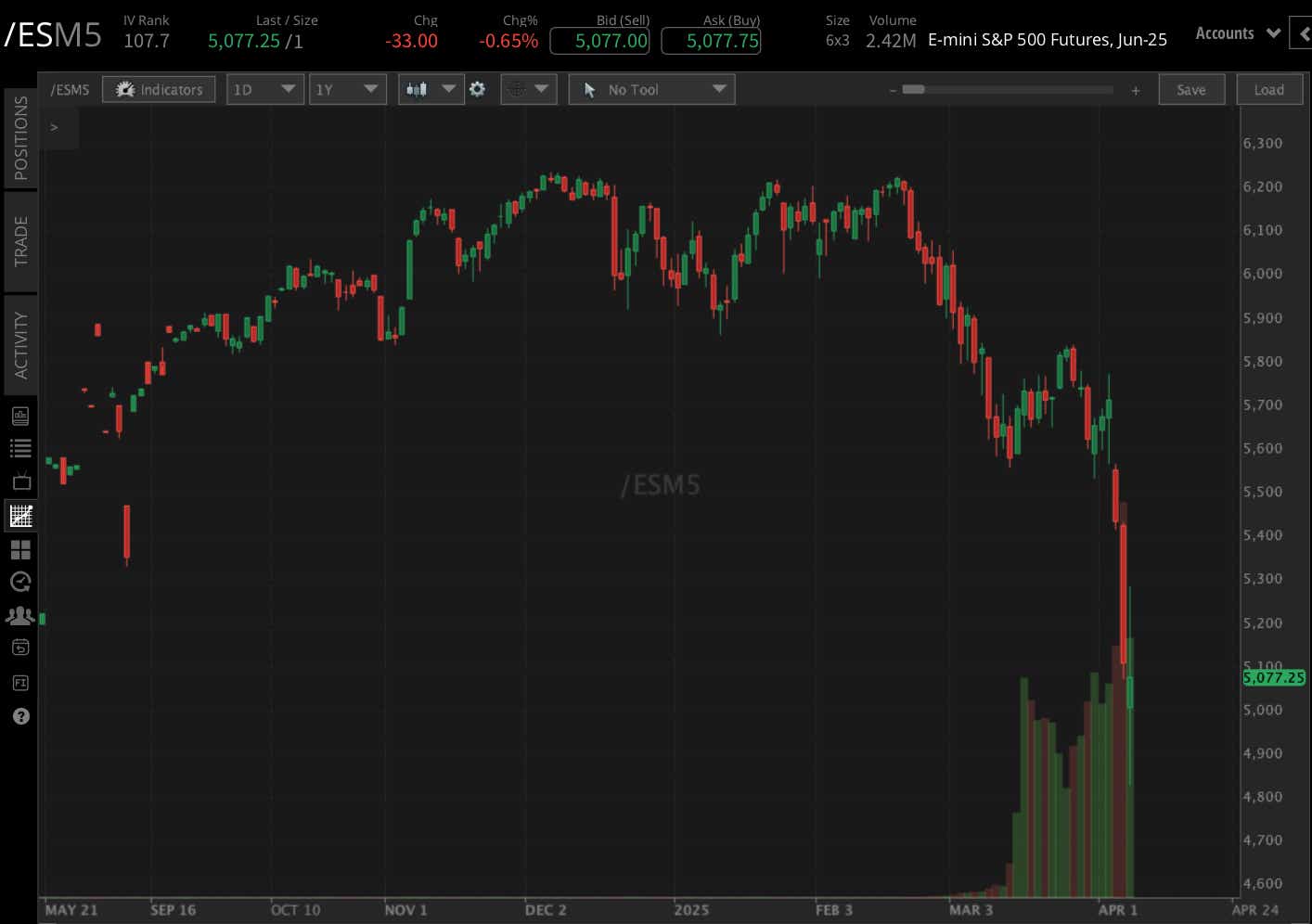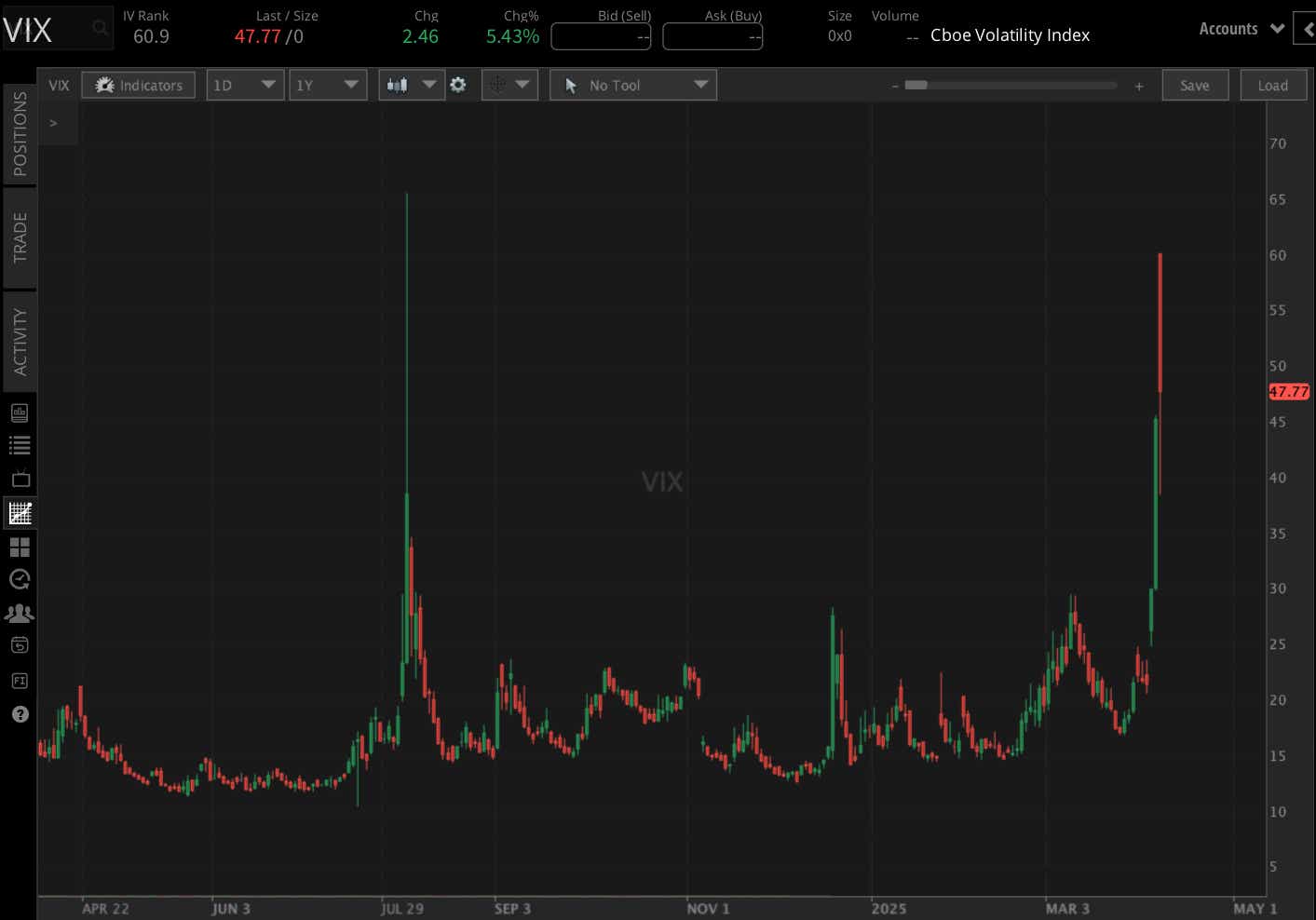Stock Market Circuit Breakers Explained

Stock Market Circuit Breakers Explained
By:Mike Butler
How these safeguards work, when they’re triggered and why they matter during extreme volatility
- Circuit breakers are designed to trigger cooling-off periods in times of violent market volatility.
- The breakers pause trading for 15 minutes when stock prices decline by 7% during a single day and again when drop they decline by 13% for the day. After a fall of 20%, trading shuts down for the day.
- Circuit breakers are a product of Black Monday—the historic crash of 1987.
- The last circuit breaker trigger was during the COVID-19 market crash of 2020.
Stock market circuit breakers are embedded to provide cool-off periods in the S&P 500 futures, Nasdaq 100 futures, Dow futures and Russell 2000 futures after extraordinary, intra-day market moves.
Three types are in place:
Level 1: A 7% decline causes a 15-minute halt to trading.
Level 2: A subsequent drop to 13% for the day triggers another 15-minute pause.
Level 3: If the day’s decrease in prices reaches 20%, the market closes shop for the day.
Trading can be emotional. It can be a fraught situation for some when single stocks are making big moves that seem unrelated to the rest of the market. But when almost all stocks and indices are moving in the same direction and to a massive magnitude, it can be an emotional situation for all.
These reactions to big market moves can prompt panic selling, which adds even more pressure to the downside.
On Feb. 19, 2025, The S&P 500 Index (SPX) reached an all-time high of $6,147.43. The CBOE Volatility Index (VIX) closed at $15.27, which is an average price for the VIX.

On this historic day—Monday, April 7, 2025—when trading volume is through the roof because of tariff uncertainty, the VIX reached a high of $60.13, and SPX has fallen under $5,000 for the first time since February 2024.

With all this said, we have yet to reach the Level 1 circuit breaker threshold in S&P 500 futures (/ES) because this sell-off has been violent but somewhat orderly. We continue to see 200 point sell-offs in the S&P 500, and if it continues, it will become a larger percentage drop as the notional value of the S&P 500 drops.
A $200 move in the S&P 500 at $6,000 is a 3.33% move.
A $200 move in the S&P 500 at $5,000 is a 4% move.
This shows the amplification of percentage moves on a lower-priced product as the market falls, but a massive move still has to occur to reach a circuit breaker limit.
Learn more about implied volatility here.
Rules for stock market circuit breakers
Before the markets open this morning, these circuit-breaker rules were outlined for the S&P 500, Nasdaq 100 and the Dow futures:
- The 7% down limit circuit breaker is in effect only outside of cash trading hours.
- The three circuit breaker price limits of 7%, 13% and 20% are applied to the trading window of 8:30 a.m. CDT to 2:25 p.m. CDT.
- From the 2:25 p.m. CDT to 3:00 p.m. CDT cash close trading window, only the 20% limit applies.
- The 7% and 13% circuit breakers trigger a 15-minute trading halt.
- Level 3 is triggered when prices go below 20% for the day an stops trading for the rest of the day.
For the S&P 500 futures (/ESM5), three circuit breaker levels were outlined prior to the open of trading today:
- Level 1 - 7% down - 4,755.25
- Level 2 - 13% down - 4,450.75
- Level 3 - 20% down - 4,095.50
For the Nasdaq 100 futures (/NQM5), three were outlined before the open of today’s trading:
- Level 1 - 7% down - 16,321.25
- Level 2 - 13% down - 15,277.50
- Level 3 - 20% down - 14,059.50
For the Dow futures (/YMM5), three levels were outlined this morning before the opening bell:
- Level 1 - 7% down - 35,847
- Level 2 - 13% down - 33,549
- Level 3 - 20% down - 30,867
How often are breakers triggered?
As you might imagine, market circuit breakers are not triggered very often. But single stock breakers, known as "limit up-limit down" (LULD), come into play more frequently because single stocks are more volatile than market indices.
Market-wide breakers were imposed near the end of the 20th century: On Black Monday in 1987, when the Dow Jones Industrial Average crashed by more than 22%, and in October 1997, when it fell 23%.
More recently, many of us traded through the historic crash in the aftermath of the COVID-19 lockdown. Four activations in the S&P 500 occurred in two weeks during that timeframe between March 9 and March 18 2020.
The S&P 500 dropped to a recent low of $2,174, and the VIX climbed all the way to $85.47
Understanding how stock market circuit breakers work and when they can be triggered can help investors navigate the market we're all experiencing. If a circuit breaker is triggered, we're living through an historic event in real-time.
Mike Butler, tastylive director of market intelligence, has been in the markets and trading for a decade. He appears on Options Trading Concepts Live, airing Monday-Friday. @tradermikeyb
For live daily programming, market news and commentary, visit tastylive or the YouTube channels tastylive (for options traders), and tastyliveTrending for stocks, futures, forex & macro.
Trade with a better broker, open a tastytrade account today. tastylive, Inc. and tastytrade, Inc. are separate but affiliated companies.
Options involve risk and are not suitable for all investors. Please read Characteristics and Risks of Standardized Options before deciding to invest in options.